The Cotard delusion was first described by French neurologist Jules Cotard in the late 19th century. One of his patients, whom he called Mademoiselle X, believed that she had “no brain, nerves, chest or entrails, and was just skin and bone.” She was also convinced that she did not need food for “she was eternal and would live for ever.” The lady, Dr. Cotard claimed, was suffering from a neurological condition he called le délire de negation (negation delirium).
The disorder -sometimes also called ‘Walking Corpse syndrome’- is so rare that it largely remains a mystery today. People affected by the syndrome believe that they or part of their body parts are dead, dying or don’t exist at all. It is usually accompanied by severe depression and some psychotic disorders. But what intrigues neuroscientists and neurologists is not just the uncommonness of the syndrome, it is that the brain of the patients may hold the key to understanding the mysteries of human consciousness.
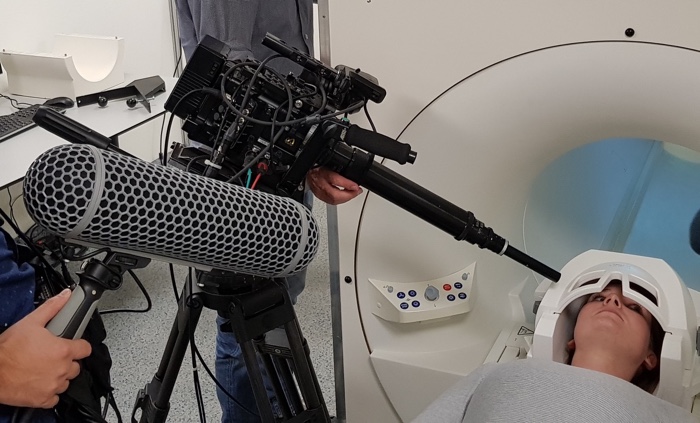
Research at Radboud University. Image courtesy of Marleine van der Werf
Marleine van der Werf, a filmmaker and visual artist whose work explores ideas about reality and the perception of reality, is currently researching how she could use immersive cinema to visualise this type (dis)embodiment.
The Living Dead will be an ‘out-of-body experience’, a multi-sensory installation that allows you to feel what it is like to have Cotard’s syndrome. Using wearables, sound, smell and virtual reality, the experience is inspired by the true stories of people who suffer from the Cotard syndrome.
I discovered the project at the STRP festival in Eindhoven where Marleine van der Werf was showing the trailer of the installation she is still developing. I’m really looking forward to (hopefully) experience the work one day. In the meantime, i had a little chat with the artist about the project:
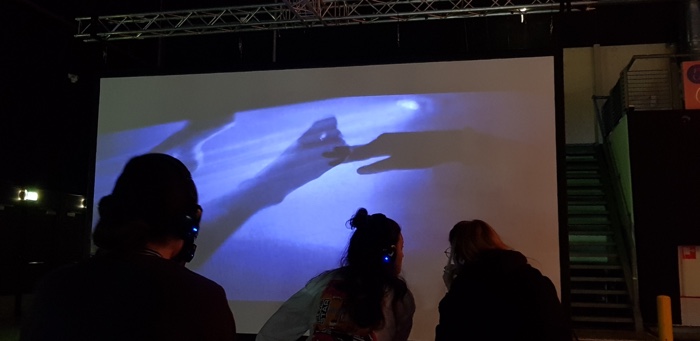
Screening of the teaser during the STRP festival. Image courtesy of Marleine van der Werf
Hi Marleine! What drove you to explore the Cotard syndrome. Was there any particular event, person or discovery that inspired you to develop the installation?
When I was a child I saw from up close how it is to loose your mind and I always thought that ‘owning a body’ is one of the few certainties we have as humans. But when I read The Disembodied Lady by neurologist Oliver Sacks combined with ideas about exoskeletons and uploading consciousness I started to question this. This sparked my artistic research in the domains of body ownership and the sense of our self the last few years.
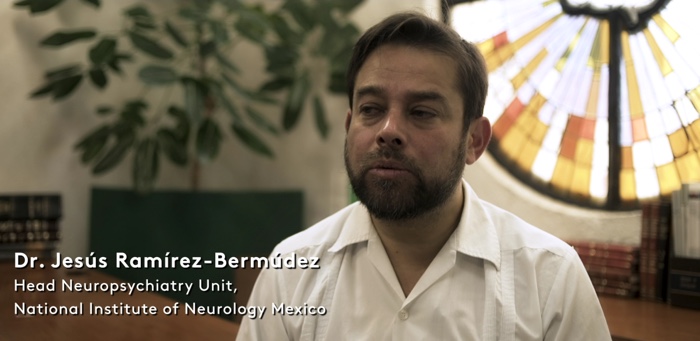
Still from the teaser featuring Dr. Jesús Ramirez-Bermudez. Image courtesy of Marleine van der Werf
How do you gather information about what it feels to suffer from this very rare condition? By speaking with doctors? Patients?
Both. I met patients who suffer from cotard and studied different cases. I also visited physicians like Jesús Ramírez-Bermúdez, who is Head of the Neuropsychiatry Unit of the National Institute of Neurology and Neurosurgery in Mexico City. He is an expert in his field and has seen the most patients who suffer from Cotard syndrome and could provide very important insights.
I obviously have no idea of what it feels to believe i am dead. Or that parts of my body are dead. Do all people who suffer from Cotard have similar experiences and ways of describing them?
It is difficult to say yes or no to this question. But what I gather from the patients experience and Dr. Ramirez-Bermudez is that there are definitely similarities. For example, that certain organs are missing or dead and that they feel detached from their environment. But of course experiences are very subjective and influenced by their background. For example, the patient I met experienced it as if she was between heaven and hell. Since she had a very religious background this seems like a logical explanation. Someone with a non-religious background could explain this feeling in a different way.
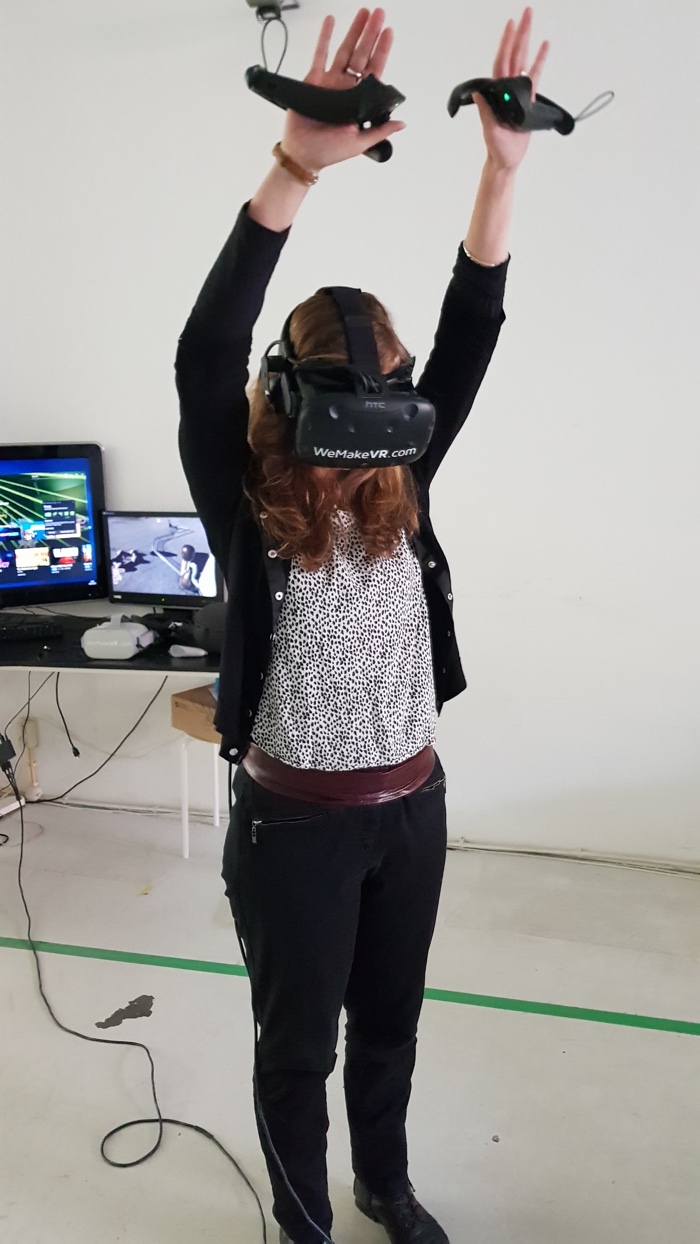
Research at We make VR. Image courtesy of Marleine van der Werf
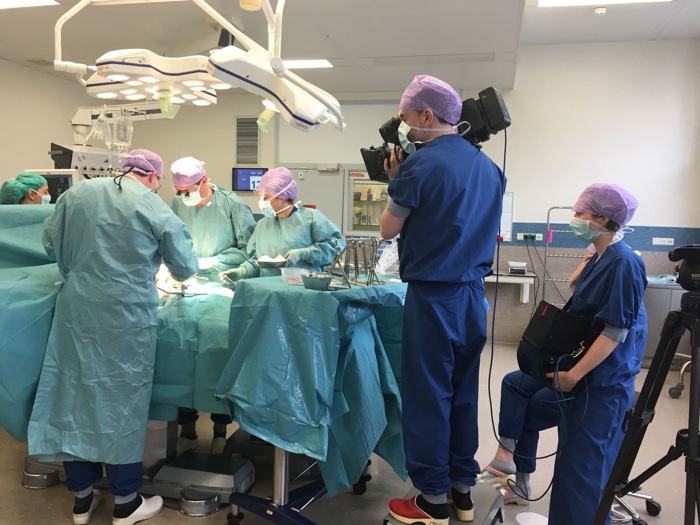
Filming in hospital during surgery. Image courtesy of Marleine van der Werf
Will the final installation reflect what one person in particular feels or will it give a general impression of the syndromes?
To create the experience we research and collect as many different stories as we can. Since it is a rare syndrome this is a difficult task, because it has not been documented as well as other syndromes. After that process, we filter and structure it in a narrative that reflects all the stories, but is still an intimate experience.
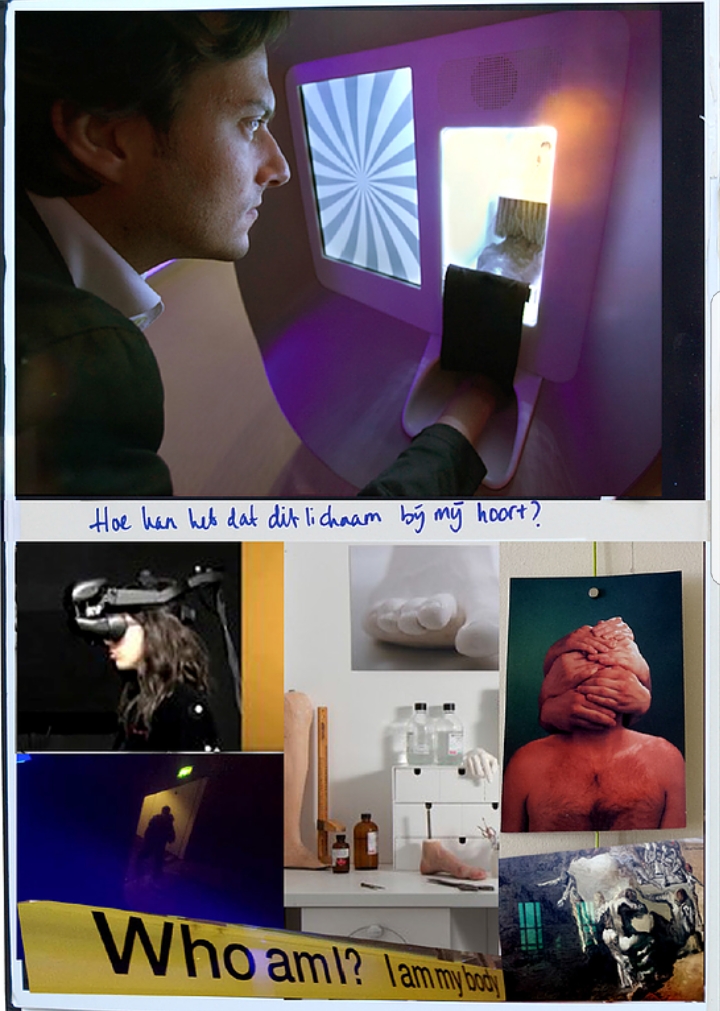
Collage in the artist’s notebook of Manos Tsakiris and his research on the body. Image courtesy of Marleine van der Werf
The installation looks very ambitious. It will use wearables, sound, smell and virtual reality to immerse the public in the story of the people who experience Cotard. Apart from doctors who work with Cotard patients, are you collaborating with other scientists or research institutes?
Yes, at the moment we are in the process of forming the whole team and are talking with leading neuroscientist that research body ownership, perception and empathy. For example Professor Floris de Lange of the Predictive brain lab of the Radboud University in Nijmegen (NL) and Professor Manos Tsakiris who established the Lab of Action & Body in Royal Holloway University in London (UK). Of course tools like wearables and virtual reality can contribute to create this immersive stories, but analogue tools are very important as well. That is the reason why we not only collaborate with artists, neuroscientist and engineers, but also with dancers. They use their body as instruments to convey stories and are vital in our process of creating the installation.
What are the biggest challenges you are encountering when trying to convey this out-of-body experience?
Having Cotard syndrome is very distressing and questions the most basic assumptions we have about our self.
The fact that the syndrome, as scientist say, could give an answer to where consciousness lies intrigues me on this journey. It is my aim to create an experience that is not a horror show, but an invitation for a wide audience to think about the relation with our body and where we as a society are heading.
I only saw the trailer during STRP and now i’m intrigued about what the final installation will be like. Could you already describe what it will look and feel like?
Creating a new work and going on a quest is always an adventure. Part of that journey is that the answer might not be the one you are looking for, but the one you actually find. But when I think about the encounters I had with the patients until now, I feel that it will be a haunting experience for sure. In which you will be challenged to rediscover the relationship with your body.
Thanks Marleine!
Previously: STRP, the festival that’s not afraid of the future .
